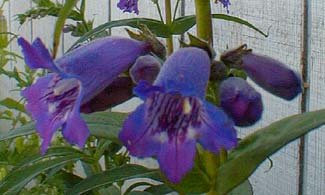
Watson Woods Project
Pages
Labels
Thursday, April 28, 2011
Pinus Palustris

Flowers!

Angiosperms
Serenoa Repens

Stick bugs
 Kingdom: Animalia
Kingdom: AnimaliaPhylum: Arthropoda
Class: Insecta
Superorder: Exopterygota
Order:Phasmatodea
Geographic Range: North America, Australia, Southeast Asia, and islands in the South Pacific
Habitat: Forests, parks, recreation sites; basically wherever there are oaks and hardwood trees.
Physical Description: These insects resemble sticks or leaves with their cylindrical bodies, which is their natural camouflage. They can range from 1 inch to 1 foot in length. Some have very narrow wings. They are usually green, brown, or yellow.
Reproduction: Reproduction usually occurs sexually, although some females do not need to mate in order to produce eggs - if eggs hatch that were not fertilized, all of those eggs will be female.
Cool facts: They are solitary and are infrequently encountered because of their secretive nature. When disturbed, they play dead and fall to blend in with their backgrounds.
Berlandiera Pumila

| Kingdom | Plantae – Plants |
| Subkingdom | Tracheobionta – Vascular plants |
| Superdivision | Spermatophyta – Seed plants |
| Division | Magnoliophyta – Flowering plants |
| Class | Magnoliopsida – Dicotyledons |
| Subclass | Asteridae |
| Order | Asterales |
| Family | Asteraceae – Aster family |
| Genus | Berlandiera DC. – greeneyes |
| Species | Berlandiera pumila (Michx.) Nutt. – soft greeneyes |
| Variety | Berlandiera pumila (Michx.) Nutt. var. pumila – soft greeneyes |
Berlandiera pumila also known as "soft green eyes" can be found all over the U.S. from Texas east to Florida and as far north as North Carolina. It grows in dry pinelands, open fields, and sandhills producing a chocolate like scent. Berlandiera pumila has a clump of sturdy, upright, light green stems with widely spaced, 3" long, light green leaves. The stems are topped from April-September with clusters of 2" yellow daisies.
Grass Spider

Found throughout the United States and Canada grass spiders can be seen from spring to fall on their tunnel like webs in plants and shrubs. These non-aggressive spiders spend most of their time waiting for flies and other insects to get tangled in their webs. They are fairly easily identifiable, a small brown spider with longitudinal striping on their legs. Male grass spiders usually spend most of their adult life wandering in search of a mate. Shortly after mating, the male often dies. Females however, do not wander from the web, and if they do, it is typically to find a new location to build the next web. They spend most of their time capturing and eating prey, building up their strength to mate and lay eggs, and wait for males to wander by and find them. In the fall, after mating, the females will deposit a disc-shaped egg sac in a crevice, and then die - often still clinging to the egg sac.
Peat moss (Sphangnum)

Kingdom:Plantae
Phylum:Bryophyta
Class:Sphagnopsida
Subclass:Sphagnidae
Order:Sphagnales
Family:Sphagnaceae
Genus:Sphagnum
Individual peat moss plants consist of a main stem, with tightly arranged clusters of branch fascicles usually consisting of two or three spreading branches and two to four hanging branches. The top of the plant, or capitulum, has compact clusters of young branches. Along the stem are scattered leaves of various shape, named stem leaves; the shape varies according to species. The leaves consist of two kinds of cell; small, green, living cells (chlorophyllose cells), and large, clear, structural, dead cells (hyaline cells). The latter have the large water-holding capacity.
Interesting Fact: Some species can hold up to20 times their dry weight in water!